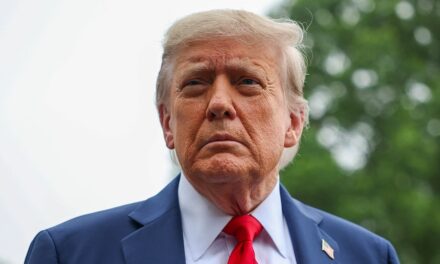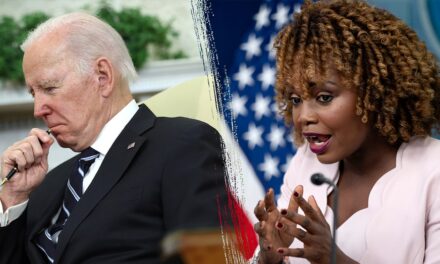The Buffalo Newspaper Guild, an organization representing journalists and media workers, has made the decision to cancel an upcoming event after a significant backlash ensued over a controversial cartoon. The cartoon in question depicted supporters of former President Donald Trump in a manner that many found offensive and incendiary, particularly in light of recent devastating floods that struck Texas. This incident has stirred up conversations about the responsibility of media organizations and the impact of editorial choices on public discourse.
The cancellation marks a noteworthy development in an era where the intersection of politics, media, and public sentiment often creates a combustible atmosphere. The Buffalo Newspaper Guild had planned to host a community gathering aimed at fostering discussion and dialogue around critical current affairs. However, the event’s focus shifted dramatically following public outcry related to the cartoon.
Many critics have voiced their concerns regarding the cartoon, which depicted Trump supporters in a negative light. Within the context of the Texas floods, which have resulted in tragic loss of life and widespread displacement, the timing of the cartoon’s publication seemed particularly insensitive to some observers. Critics argued that utilizing such imagery during a national crisis undermines the gravity of the situation impacting lives across Texas.
Despite the right to free speech and editorial freedom, the backlash highlighted the delicate balance media organizations must maintain when crafting narratives, especially ones involving politically charged subjects and sensitive events. The cartoon in question sparked debates about the ethical responsibilities of journalists, the potential ramifications of humor in times of tragedy, and whether certain topics should be approached with heightened sensitivity.
Supporters of the Buffalo Newspaper Guild had initially viewed the gathering as an opportunity to engage with the community about the importance of journalism, the role of satire, and how editorial choices can shape public perception. However, the event’s purpose was overshadowed by the backlash, leading organizers to reconsider their plans. After discussions among members of the Guild, the decision was made to cancel the event entirely.
In a statement released by the Buffalo Newspaper Guild, the organization expressed regret over the situation and emphasized the importance of creating an inclusive environment that promotes respectful dialogue. “We recognize that our editorial choices have consequences and strive to engage with our community in a constructive manner. We appreciate the feedback we have received and are committed to fostering a culture of understanding and respect in our interactions,” the statement read.
This incident is already drawing comparisons to previous controversies where media organizations faced scrutiny for content deemed inappropriate or inflammatory. The rise of social media has intensified the reach and speed at which public outrage can manifest. Social media platforms became inundated with reactions to the cartoon, with hashtags calling for accountability from the Guild trending in various online forums. Individuals from both sides of the political aisle shared their views, leading to a more extensive conversation about how political cartoons can inform or potentially distort public conversation.
In the wake of the canceled event, voices from both sides have emerged. Proponents of free expression defended the use of satirical cartoons as a mechanism for political commentary, emphasizing their long-standing role in American culture. They argue that satire serves as a means of questioning authority, highlighting hypocrisy, and encouraging critical thought among the public. Furthermore, many believe that humor can often provide a necessary outlet for dealing with difficult subjects.
On the other hand, detractors emphasized the need for sensitivity during dire circumstances. Floods in Texas have led to loss of homes, live evacuations, and the overwhelming burden of recovery for thousands of families. For these critics, for cartoonists and media outlets to inject political commentary into moments of crisis can seem callous and disconnected from the human suffering experienced by those affected.
Several media analysts have weighed in on the evolving landscape of journalism and the role of editorial staff in navigating contentious issues. Some noted that while editorial freedom is a vital component of a viable press, understanding the audience’s emotions—especially in times of crisis—remains integral to journalistic integrity. The incident serves as a reminder that journalists and media organizations must continually reevaluate their approach to storytelling and public engagement.
Recent events underscore the heightened scrutiny that media outlets experience—especially those involving polarizing figures like Trump. Political cartoons are often at the heart of this scrutiny, as they push boundaries and test the limits of satire. While humor can facilitate dialogue and reflection, commentary that crosses perceived lines of respect can have far-reaching consequences, as evidenced by the reactions to this cartoon.
As the Buffalo Newspaper Guild reflected on the canceled event, discussions surrounding the importance of accountability and community connection took center stage. On a larger scale, many scholars and commentators are now calling for media organizations to adopt practices that foster not only creative expression but also an empathetic awareness of the diverse communities they serve.
The fallout from this incident may have implications beyond the immediate responses from the Buffalo Newspaper Guild. It raises essential questions about media ethics, the role of humor in public discourse, and the intersections between art, politics, and social responsibility. How these discussions unfold could have lasting effects on the relationship between media organizations and the communities they aim to serve.
Moving forward, it remains essential for media organizations to engage in conscious dialogue with their audiences. By learning from missteps and controversies, journalists can protect their vital role in public discourse while respecting the emotional landscape of their communities. As communities across the nation grapple with the numerous challenges posed by political polarization and social issues, understanding context, empathy, and accountability will prove indispensable in navigating this complex media landscape.
In the end, the cancellation of the Buffalo Newspaper Guild’s event serves as a critical reminder of the responsibility borne by media organizations and the impact that their messages can have on public understanding and sentiment. As serious conversations surrounding media ethics and community engagement evolve, the conversation begun by this incident is likely just the start of a broader dialogue concerning the media’s role in today’s society.
































